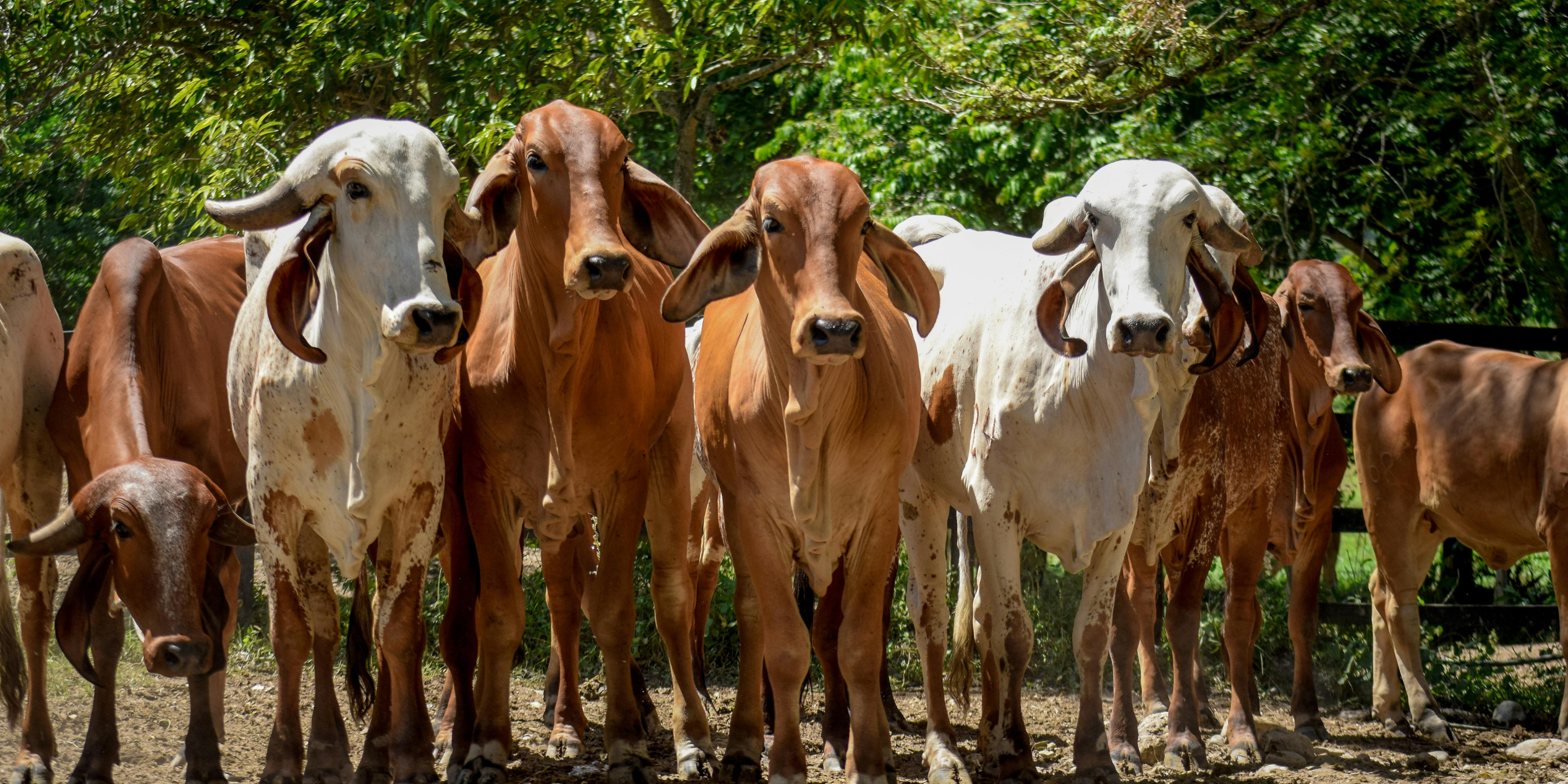
Heat Warriors: A Spotlight on Brahman Cattle
In the sultry climates of the southern United States, Brazil, and beyond, one breed stands out for its uncanny ability to thrive where others struggle: the Brahman. With distinctive humps, loose skin, and a calm demeanor, Brahman cattle are the embodiment of heat tolerance, parasite resistance, and durability. In this post, we’ll delve into their origins, hallmark characteristics, and vital roles in modern beef production.
Origins and History
-
Indian Heritage
Brahman cattle descend from the various “zebu” (humped) breeds of India—such as the Guzerat, Nellore, and Gir—where they evolved over millennia under hot, humid, and disease‑challenged conditions. -
Development in America
In the early 1900s, U.S. breeders imported Indian zebu stock and selectively crossed them to create the American Brahman. By mid‑century, the breed had solidified its reputation for toughness and adaptability.
Defining Traits
-
Heat Tolerance
Their loose skin, large surface area, and sparse coat facilitate heat dissipation, allowing Brahmans to maintain productivity in temperatures that stress other breeds. -
Parasite and Disease Resistance
Natural resistance to ticks, flies, and certain diseases reduces veterinary costs and improves animal welfare in challenging environments. -
Longevity and Hardiness
Brahmans often outlive other breeds in harsh conditions, producing calves into advanced ages and providing value over a longer productive lifespan. -
Distinctive Hump and Dewlap
The muscular hump stores energy reserves, while the dewlap aids in thermoregulation—both hallmarks of their zebu ancestry. -
Maternal Instincts
Brahman cows exhibit strong mothering behavior, protective instincts, and ample milk production, nurturing healthy calves even in minimal‑input systems. -
Calving Ease
Relative to their frame size, Brahman calves are often born with fewer complications, thanks to narrower birth canals and smaller calf size at birth.
Brahman in Modern Production
-
Purebred Operations
Seedstock breeders focus on refining traits such as structural soundness, growth rate, and maternal performance, supplying bulls and semen to commercial producers. -
Crossbreeding Foundations
Brahman genetics underpin many tropical and subtropical composites—like Brangus (Brahman × Angus) and Santa Gertrudis (Brahman × Shorthorn)—combining heat and parasite tolerance with beef quality. -
Gulf Coast and Southern U.S. Ranching
On Florida’s Gulf Coast, Texas brush country, and Louisiana’s bayous, Brahmans graze where humidity, heat, and insects would challenge traditional British breeds. -
Global Impact
Beyond the U.S., Brahman‑based herds thrive in South America, Africa, and Australia—where environments mirror their ancestral roots and demand similar resilience.
Economic and Environmental Advantages
-
Reduced Input Costs
Lower need for shade, cooling infrastructure, and chemical parasite control cuts operational expenses in hot climates. -
Sustainable Adaptation
By matching genetics to environment, Brahman-based systems optimize land use, reduce losses, and promote animal well‑being. -
Hybrid Vigor Benefits
Brahman crosses frequently exhibit heterosis—boosting fertility, growth, and survivability in first‑generation progeny. -
Carbon Footprint Mitigation
Longer productive lifespans and efficient pasture utilization can translate to a lower environmental footprint per pound of beef produced.
Conclusion
From the riverbanks of India to the sun‑baked pastures of the American South and beyond, Brahman cattle have proven themselves as true “heat warriors.” Their unique physiology, natural defenses, and maternal strengths make them indispensable in hot, humid regions and in crossbreeding programs worldwide. For producers seeking durability, efficiency, and adaptability, Brahmans offer a living testament to the power of matching breed to environment—ensuring beef production that endures, even under the harshest conditions.
Up next: Black-and-White Powerhouse: A Spotlight on Holstein Cattle
Share


